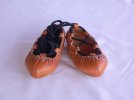- Joined
- Aug 2, 2014
- Messages
- 746
Interested in what old-time woodsmen and lumberjacks carried and wore for clothing, as well as what some of you have found useful. I got a book about lumberjacks for Christmas so if I find good information I will try to post it.
I'll post what I carry. Generally I go out for about 2-4 hours, either dedicated to silviculture, trailmaking, trailclearing, limbing and bucking, or felling.
Gransfors Scandinavian forest axe if I am limbing, exploring, or making a new trail. Great limbing axe but I find it lacking once you get into the size of trees generally found fallen across trails or roads. Need at least 2.5 pounds for that. For winter bushcraft, general work, or trail work I like the 3.25 lb size, Gransfors Felling axe or my new E&S. Strictly felling, either the E&S or my old double-bit 3.8 lbs.
Rubber boots. Some won't like this, but I generally don't wear steel-toe boots. Too much weight for me. I find rubber boots are quite light and good for wet-cold conditions. Calked boots are also crucial here, or at least crampons, since there are lots of ice storms.
Whistle/compass combo.
SAK and puukko. Probably not really necessary, but I always carry one or both in the woods religiously.
Fallkniven DC4. Easy to carry and works well enough on axes.
Deerskin chamois or towel attached to my belt with a carabiner. I find this incredibly useful for drying my hands and keeping the axe clean without getting my clothes wet. May also provide some stropping benefits. Also can serve as emergency first aid if necessary.
Firesteel/matches.
Carhartt hooded jacket. Works much like an anorak, can waterproof it in areas if necessary. I've also been working on a homemade anorak.
Carhartt pants. Comfortable and keep me dry, durable, the side pockets fit a DC4 sharpening stone perfectly.
Hooded sweatshirt or wool sweater. Whatever is comfortable for working movement, and also good for venting warm air/moisture.
Headlamp of some kind. Recently came in handy when looking for a sheath that fell out of my pocket at dusk and the subsequent walk home.
My dog brings companionship and some protection from animals. Have to be careful when felling though.
I try to go lightweight if possible. Generally don't even bring a bag with me, but I've considered taking one more often to include a wool/emergency blanket, rope, and more first aid/emergency items. Perhaps a limbing axe. Would also be good to carry head protection for falling trees, which I keep telling myself I will do.
So what do you carry? Or what have you heard that lumberjacks of old carried?
I'll post what I carry. Generally I go out for about 2-4 hours, either dedicated to silviculture, trailmaking, trailclearing, limbing and bucking, or felling.
Gransfors Scandinavian forest axe if I am limbing, exploring, or making a new trail. Great limbing axe but I find it lacking once you get into the size of trees generally found fallen across trails or roads. Need at least 2.5 pounds for that. For winter bushcraft, general work, or trail work I like the 3.25 lb size, Gransfors Felling axe or my new E&S. Strictly felling, either the E&S or my old double-bit 3.8 lbs.
Rubber boots. Some won't like this, but I generally don't wear steel-toe boots. Too much weight for me. I find rubber boots are quite light and good for wet-cold conditions. Calked boots are also crucial here, or at least crampons, since there are lots of ice storms.
Whistle/compass combo.
SAK and puukko. Probably not really necessary, but I always carry one or both in the woods religiously.
Fallkniven DC4. Easy to carry and works well enough on axes.
Deerskin chamois or towel attached to my belt with a carabiner. I find this incredibly useful for drying my hands and keeping the axe clean without getting my clothes wet. May also provide some stropping benefits. Also can serve as emergency first aid if necessary.
Firesteel/matches.
Carhartt hooded jacket. Works much like an anorak, can waterproof it in areas if necessary. I've also been working on a homemade anorak.
Carhartt pants. Comfortable and keep me dry, durable, the side pockets fit a DC4 sharpening stone perfectly.
Hooded sweatshirt or wool sweater. Whatever is comfortable for working movement, and also good for venting warm air/moisture.
Headlamp of some kind. Recently came in handy when looking for a sheath that fell out of my pocket at dusk and the subsequent walk home.
My dog brings companionship and some protection from animals. Have to be careful when felling though.
I try to go lightweight if possible. Generally don't even bring a bag with me, but I've considered taking one more often to include a wool/emergency blanket, rope, and more first aid/emergency items. Perhaps a limbing axe. Would also be good to carry head protection for falling trees, which I keep telling myself I will do.
So what do you carry? Or what have you heard that lumberjacks of old carried?











